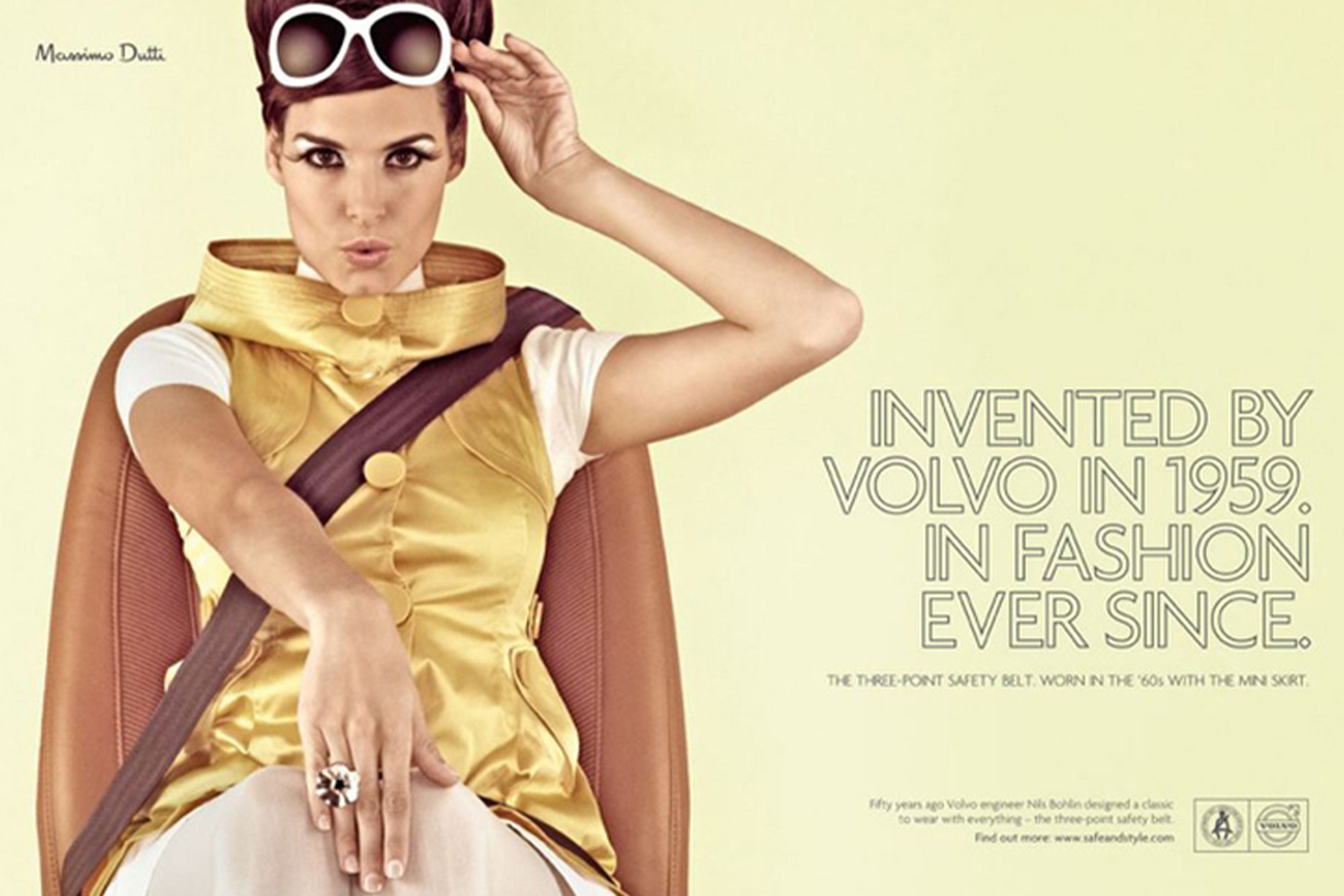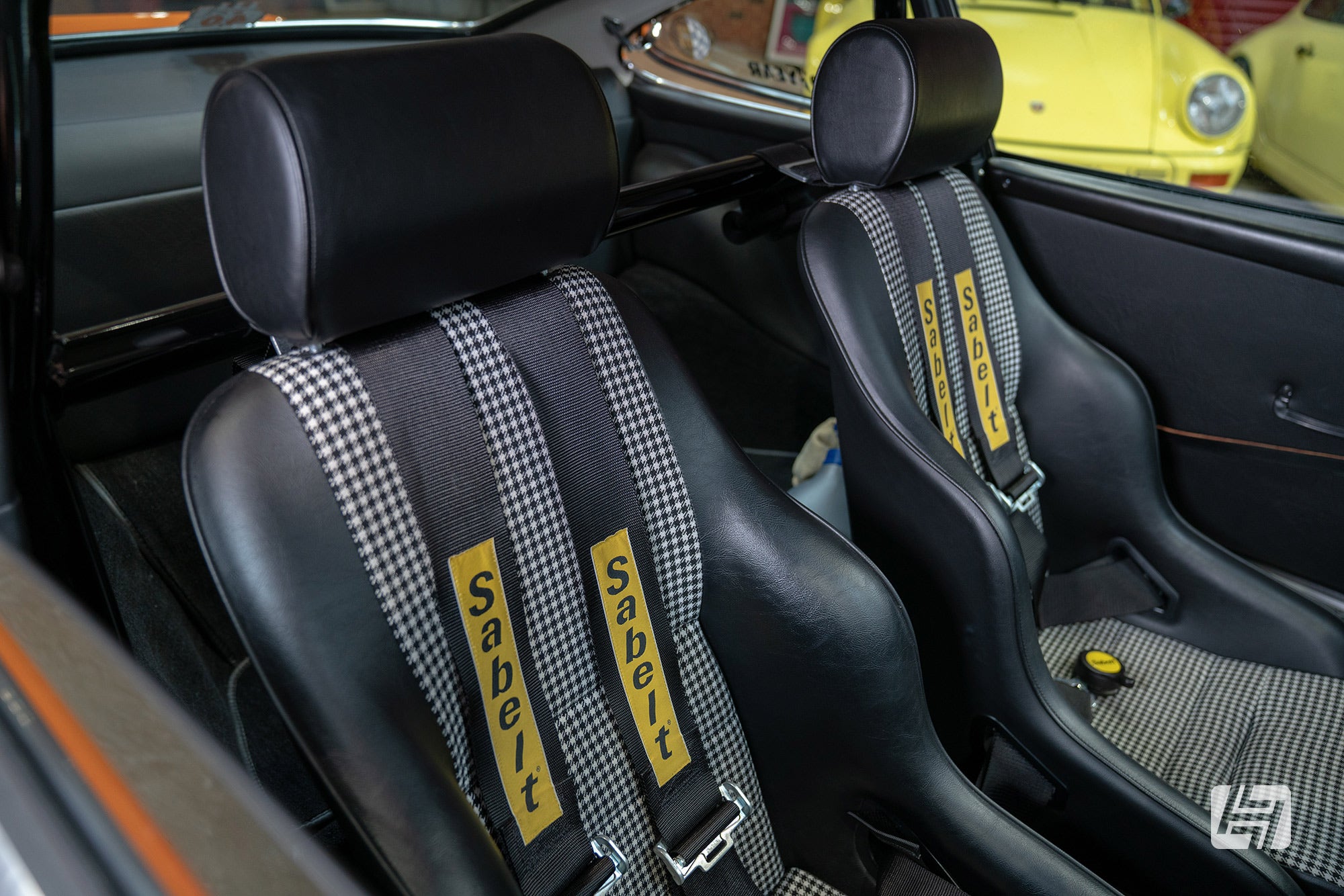Does my classic car need seat belts?
There is no denying the effectiveness of the seat belt as a safety device, and of course, there are also legal implications connected with choosing to not 'clunk clip with every trip.' But if you are restoring a vintage VW or a Classic Porsche back to original specification perhaps you are prepared to skip the straps or fit something more minimal in the name of authenticity. Of course, we urge you to consider all passengers safety, regardless of whether it is allowed, but do read on as we ask does my classic car need seat belts?
The history of Seat belts
It was the safety-conscious Swedish manufacturer Volvo, in particular their engineer Nils Bohlin, who was behind the invention of the 3 point seat belt in 1959. Potentially doing themselves out of a fortune, Volvo kindly opened up the patent for all firms to access citing it as "visionary and in line with Volvo's guiding principle of safety." When it comes to the lives this technology has saved, the front seat belt was credited by the UK Government for a 25% decrease in a driver fatality and a 29% drop in fatal injury after they passed the compulsory ruling back in 1983.

What cars need seat belts by law?
All new vehicles sold in the UK from 1965 had to have at least 2 seat belt mounting points in place but didn't require a belt to actually be fitted. From 1967 all-new cars had to be sold with 3 point belts fitted in the front. In 1968, seatbelts were required to be retro-fitted to all cars sold from 1965, however, this didn't mean drivers had to wear one. The wearing of a seat belt in the front of a passenger vehicle didn't become mandatory until 1983, with the wearing of rear belts for under 14s in 1989 and belts for all rear passengers as recently as 1991. To add to the confusion, camper vans made prior to 1967 with an unladen weight not exceeding 1525kg don’t require front seat belts. Those made after that date and up until April 1981 only require a two-point 'lap belt' to be fitted. After April 1981, the driver and passenger furthest away from them must wear a three-point belt. From 1987, all front-seat passengers must wear a three-point belt. Legally seatbelts are not required on fold-down seats in the back of camper vans, providing the vehicle is not overloaded, but the Department of Transport says it is vital passengers remain safe when travelling and recommend that they remain “strapped in”. In short, if you have a seat belt fitted, it must be worn.

Can I fit lap belts in my classic car?
2 point seat belts, commonly known as lap belts can be fitted in the front of any passenger car 1965 or older. Light commercial vehicles, including Campervans up until April 1981 can also make use of two-point seat belts in the front, provided their unladen weight is less than 1525kg. This should cover Type 2 and Type 25 models before camper conversion, but please do your own research for your specific vehicle. We offer standard black lap belts with modern buckle, including an inertia option. We also stock a range of coloured lap belts with modern buckle to better compliment your custom interior. If your vehicle is newer or heavier than those listed above you will need to have working three-point seat belts fitted, at least for the occupants in the front.

Can I fit Aircraft style seat belts in my classic car?
Vehicles built before 1972 can legally be fitted with the stylish 'aircraft buckle' seat belts. These are available in both 2 and 3 point configuration and offer a great compromise between form and function in your classic car. To add some additional refinement to your seat belt installation, we are able to offer chrome buckle seat belts with an inertia reel, as well as the more traditional static, adjust to size, seat belts. Our 3 point chrome buckle seat belts fasten on your hip and are available in a choice of colours including cream, blue, tan and red.

Are front seat belts the same as rear seat belts?
It is unlikely your vehicle will require the same seat belts in the front and rear unless you fit static, non-inertia type. Vehicles with two separate front seats will often have 3 point seat belts with rigid stalks. This ensures the socket remains in the right place when you go to belt up. A good example of this is VW Beetle front seat belts or VW Type 2 front seat belts. If you are buying a seat belt for bench seat vehicles you will find they use webbing (the material seat belts are made from) rather than a rigid stalk, allowing the belt to slide through between the base and the backrest. Another big difference between the front and rear seatbelts is the position or the angle that the inertia real is mounted at. Front seat belts typically have the inertia reel mounted at the base of the seat. Rear seat belts, because of limitations around suitable mounting points sometimes have the inertia reel mounted up higher. If the reel is at the wrong angle you will find the belt won't operate freely.

Retrofitting seat belts in classic cars
If you have a classic car with nothing in the way of safety belts, or a vehicle made before 1967 with only limited mounting points it is still possible to retrofit seat belts. The key factor to consider when mounting a classic car seat belt is how strong the floor, pillar or component you are attaching the belt to actually is. If, in the event of an accident, all your weight is forced upon the belt, will that mounting remain solid to restrain you? Presuming your vehicle has no mounting points at all it is important you use an approved seat belt mounting bracket, and weld it securely to the solid metal on the chassis of the vehicle. We stock FIA approved mounting points for this very purpose.

Fitting seat belts to the rear of campervans
Seat belts can certainly be fitted in the rear of campervans. The thing to consider is where they will mount, and how they will operate smoothly if you have units fitted or a fold-out bed in place. This might be a job you prefer to consult with a professional on, however, we do offer brackets to install 3 point seat belts in the rear of your Type 2 camper van, should that help. Following on from our advice above, if you have an older campervan conversion there are more things to consider. Are those comfy camper cushions on your back seat securely fastened? If not, your passengers could experience 'submarining' in the event of a sudden stop or impact. This effect describes a person sliding under the lap belt on an insecure seat base, which makes them likely to incur far worse internal injuries from the belt, and the surroundings should they fall free. The other thing to bear in mind is the strength of any boards that make up your rear rock n' roll bed. Should these break or snap under impact a similar fate could await your rear passengers. For modern camper conversions at least, there are numerous crash-tested rear seat/bed combos offering complete peace of mind.


Carrying Children in cars without seatbelts
Here is what the law has to say... No child under 3 can travel unrestrained in a vehicle without seatbelts. Children over 3 can travel in a vehicle without seatbelts, but only in the rear. Children under the age of 12 and/or under 1.35m tall should not only wear a belt but must also use a suitable booster seat.

Is it legal to fit race harnesses in my classic car?
As long as they are securely mounted and carry a relevant safety label, there is nothing stopping you from fitting race harnesses to your road car. However, we would suggest that they are used in conjunction with a decent high backed bucket seat. The last thing you want to do in the event of an accident is to strap yourself securely to a seat that will might fall apart in the event of something nasty happening.

What is the penalty for not wearing a seat belt?
Currently, drivers caught without a seatbelt (in a vehicle with them fitted) face on-the-spot fines of £100 and three penalty points. If prosecuted, the maximum fine is £500. If a passenger is under 14 it is the driver's responsibility to ensure they are wearing a suitable belt, after 14 the passenger carries the threat of a fine, not to mention serious injury should the worst happen.

Reasons for not wearing a seatbelt
There are, strangely enough, some legal reasons for not wearing a seatbelt whilst driving. These include; if you are a driver who is reversing, or you are a passenger supervising a learner driver reversing. You are travelling in a vehicle being used for Police, Fire and rescue purposes, are a passenger in a 'trade' vehicle and are investigating a fault, driving a goods vehicle on deliveries that are travelling no more than 50 metres between stops, or lastly a licensed Taxi driver who is plying for hire or carrying passengers. But we also recommend that you do!

As we stated at the beginning, this article isn't about highlighting legal loopholes at the expense of safety. We feel it is important to be aware of what the requirements are, so each of us can make our own risk analysis about what we feel is the most suitable seat belt for our classic car, and the people who travel in it.
Drive carefully.
Andy




 Beetle
Beetle
 T2 Bay
T2 Bay
 T2 Split
T2 Split
 T25
T25
 Transporter T4
Transporter T4
 Transporter T5
Transporter T5
 Golf Mk1
Golf Mk1
 Golf Mk2
Golf Mk2


 911
911
 996
996
 997
997
 986 Boxster
986 Boxster
 987 Boxster
987 Boxster
 912
912
 944
944
 924
924


 Defender
Defender
 Discovery Series 1
Discovery Series 1
 Discovery 2
Discovery 2
 Series 1, 2 & 3
Series 1, 2 & 3
 Freelander
Freelander
 Freelander 2
Freelander 2




